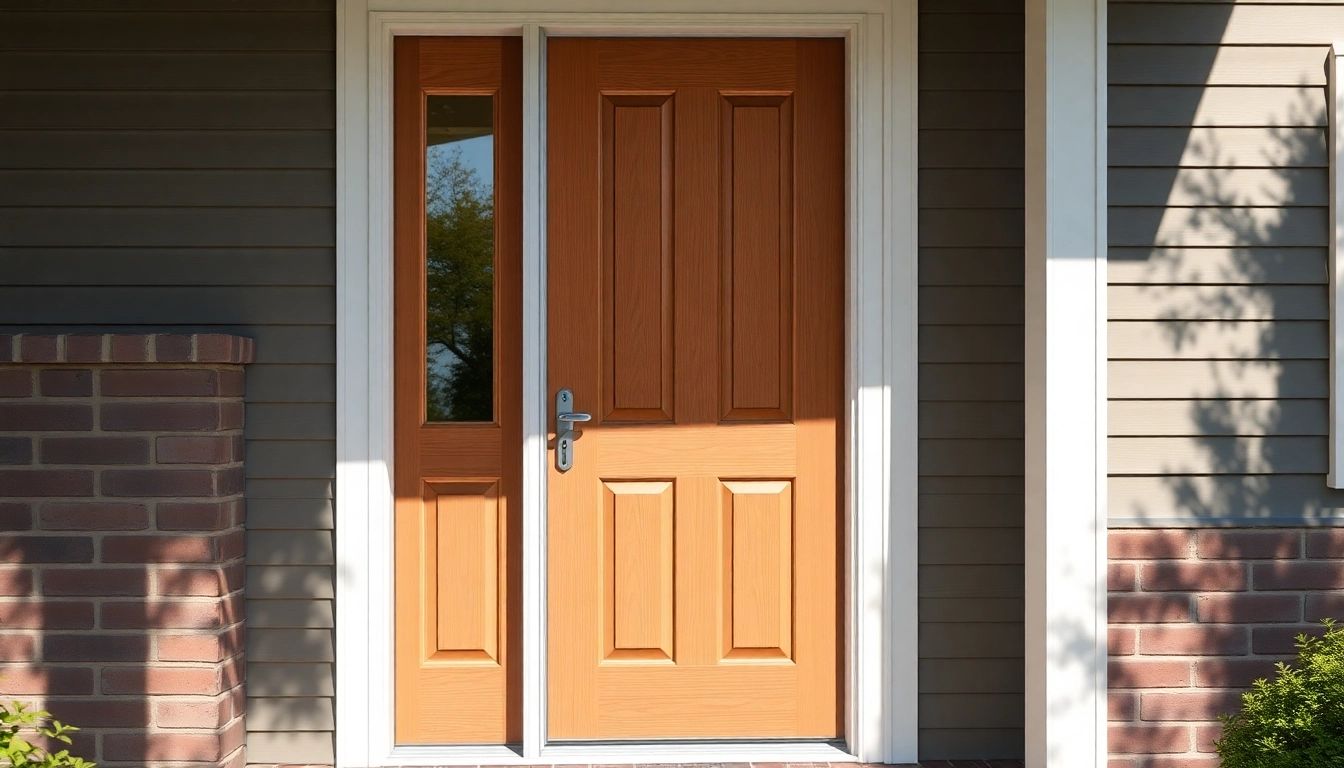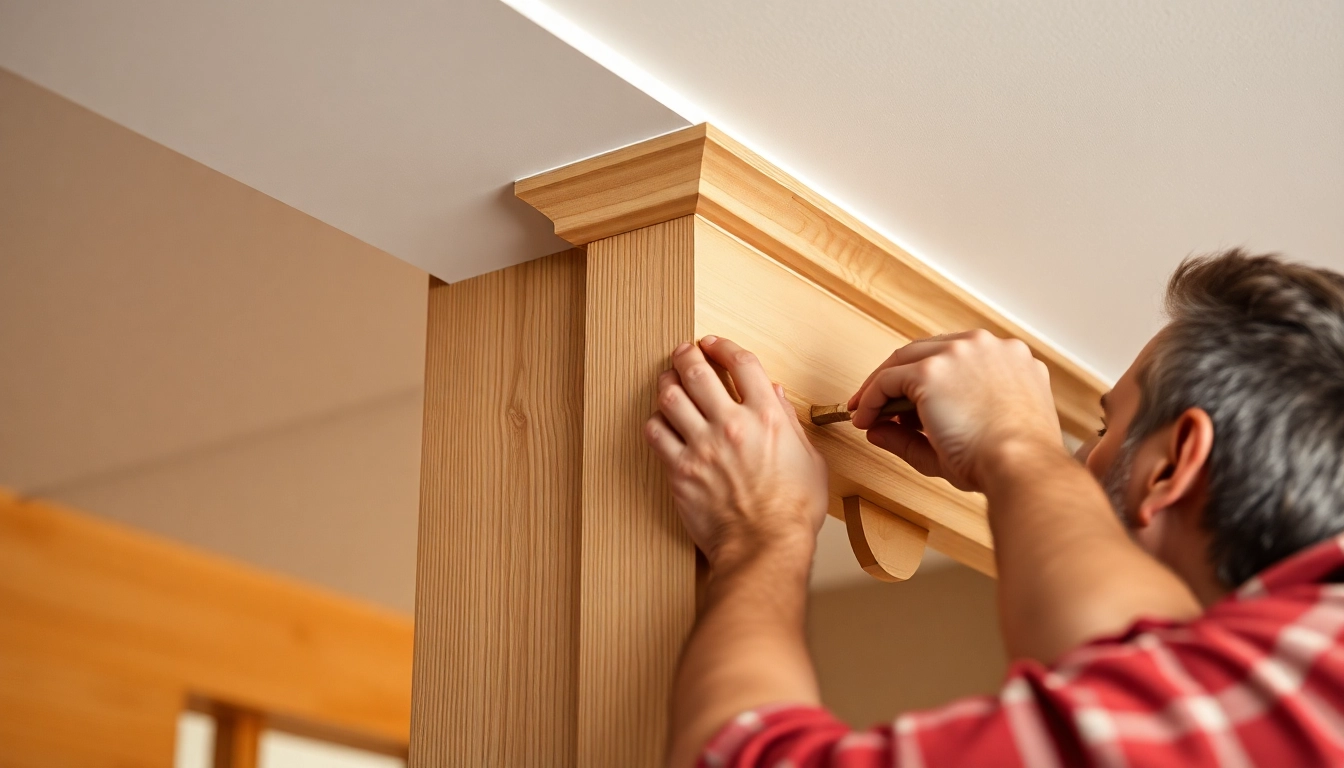An updated entryway can redefine your home’s first impression while boosting security, energy performance, and daily comfort. For Indianapolis homeowners, a well-planned front door replacement is a strategic upgrade that pays off in curb appeal and long-term efficiency. Learn more about your options here: front door replacement.
Understanding Front Door Replacement Basics for Indianapolis Homes
What front door replacement involves
Replacing a front door involves more than swapping panels. It includes removing the existing door and frame, inspecting the jamb for structural integrity, and ensuring a precise fit for the new slab. Proper weatherproofing, flashing, and shimming are essential to prevent drafts and moisture intrusion. A thorough replacement also considers thresholds, sill height, and correct latch alignment to maintain security and ease of use.
In practice, a successful replacement blends measurement accuracy with careful finishing, so the door operates smoothly across seasons while preserving the home’s aesthetic. Proper preparation reduces callbacks and contributes to long-term performance.
Key components and materials for exterior doors
Exterior doors comprise several critical components that affect fit, security, and energy efficiency:
- Door slab and frame (jambs)
- Hinges, strike plate, and locking hardware
- Thresholds and weatherstripping
- Glass options and insulation cores
- Final finishes and exterior coatings
Material choices drive performance and maintenance. Common options include wood for a classic look, fiberglass for durability and low maintenance, steel for security, and composite doors that combine stability with efficient insulation.
Cost ranges, timelines, and budgeting
Budgeting for front door replacement depends on size, configuration, and material. Installed costs generally range from modest entries around $1,500 to premium setups $6,000 or more. Entry-level fiberglass or steel doors with standard hardware may land between $1,500 and $3,500 installed, while premium solid wood with custom finishes and decorative glass can reach $4,000–$7,000. Turnaround from measurement to installation typically spans 1–3 weeks for stock doors and 3–6 weeks for custom configurations, depending on scheduling and finish selections.
Choosing the Right Exterior Doors for Your Indianapolis Home
Front doors options: styles, configurations, and energy impact
Front doors come in a range of styles—from traditional panel doors with beveled glass to sleek, modern designs. Configurations include single doors, double doors for wider entryways, and optional sidelights or transoms that flood the foyer with light. Energy performance matters: look for doors with low U-factors, tight seals, and insulated cores to reduce heat transfer and drafts, especially in Indiana’s climate.
Materials, finishes, and energy efficiency considerations
Each material brings distinct advantages. Fiberglass doors offer durability with realistic wood-grain finishes and minimal maintenance. Steel doors prioritize security and affordability. Wood doors deliver premium aesthetics but require more upkeep. Composite doors provide a balanced combination of aesthetics, durability, and energy efficiency. Finishes—from natural stains to painted colors—should complement your exterior while protecting the door from weather. Energy-efficient options often feature insulated cores and triple- or double-pane glass with low-emissivity coatings.
Branding, warranties, and installation requirements
Brand selection influences warranty depth, hardware options, and long-term performance. Reputable brands commonly offer warranties covering doors, hardware, and glass components for 10–25 years, with some premium lines providing lifetime coverage on certain elements. Installation quality is critical: professional fit, proper shimming, sealing, and alignment ensure warranty validity and optimal performance. Verify local code compliance and HOA guidelines as part of the planning process.
The 4-Step Front Door Replacement Process
Step 1: In-home measurement and design selection
Begin with precise measurements of rough opening, jamb width, and swing direction. A design consultation helps you select a door style, glass configuration, hardware finishes, and energy features that align with your home’s architecture and budget.
Step 2: Customization options and finalizing specs
Finalize the specs: material, finish, glass type, hardware, and weatherproofing details. Confirm thresholds, sill height, and security features. This stage ensures that every component works harmoniously with the frame and surrounding exterior.
Step 3: Scheduling installation and quality checks
Coordinate a convenient installation window. On installation day, technicians verify plumb, level, and square alignment, perform air and water sealing, and test hardware operation. A final quality check confirms that insulation, weather seals, and finishes meet expectations.
Step 4: Post-installation review, warranty activation, and care guidelines
After install, review warranty terms, care instructions, and recommended maintenance schedule. A brief walkthrough covers cleaning, periodic caulking, and seasonal checks to maintain performance and curb appeal for years to come.
Customization Options and Styles for Exterior Doors
Material choices: wood, fiberglass, steel, and composite
Choose a core material that matches your lifestyle and climate. Wood offers classic warmth and texture but requires regular sealing. Fiberglass provides durability with low maintenance and authentic wood-like finishes. Steel delivers maximum security at a value, while composites combine efficiency with design flexibility.
Finish, glass, and hardware customization
Finish options range from natural wood stains to bold painted tones. Glass choices include clear, decorative, or frosted patterns, with energy-efficient coatings. Hardware finishes—from polished nickel to aged bronze—tie the door to your home’s hardware ecosystem and architectural style.
Style palettes: traditional, transitional, and contemporary
Traditional doors emphasize ornamentation and symmetry; transitional designs blend classic details with modern lines; contemporary styles favor clean profiles, large glass, and minimal ornament. Your palette should echo exterior materials, rooflines, and surrounding landscaping for cohesive curb appeal.
Measuring, Installing, and Maintaining for Front Door Replacement Success
Measuring tips and prep work for precision
Accurate measurements require checking the rough opening at multiple points, accounting for seasonal expansion, and identifying any existing settlement. Prepare by removing obstructive trim and ensuring the entry area is clear for installation access.
Installation best practices and contractor coordination
Coordination with your contractor should cover site protection, leveling, secure anchoring, and airtight sealing. Confirm that weatherproofing is addressed from the exterior through the interior trim, preventing moisture intrusion and thermal leakage.
Maintenance, weatherproofing, and performance metrics
Keep seals intact by inspecting weatherstripping and caulking annually. Clean and recoat exterior finishes as needed, and monitor door operation for settling or binding. Track performance metrics such as draft reduction and indoor comfort to gauge the return on your investment.

